2017 Yamaha EX Review
A value model designed to do battle with the Sea-Doo Spark
Yamaha began its 2017 press intro by first laying out a few facts. One, the ratio of first-time buyers is on the rise. Two, used models are increasingly outselling their new counterparts. And three, well over 50% of new sales are craft in the value/economy category.
The unspoken, but obvious number four? Sea-Doo is doing quite well with a model called the Spark.
Add these facts together and you get Yamaha’s decision to enter the “Rec Lite” category with a three-model line that is shorter, lighter and more affordable than any three-passenger WaveRunner the brand has offered. First in line? A fun, playful, spirited model dubbed the EX.
Good Things, Smaller Packages
Yamaha’s entry into the Rec Lite category now clearly offers definition between the three primary product lines. At just over 10’ 3” in length, the EX is noticeably shorter than the 11’ VX, and even more so than the 11’ 8” FX. Narrower, too. Line them up side by side and the effect is that of siblings of advancing ages. The Yamaha EX is also noticeably simpler. While indisputably showing the lines of a Yamaha, it lacks the oversized storage hatch or large angular mirrors of the VX and FX. Follow those lines aft and you’ll also note a small, rectangular, more bare-bones information display, narrower saddle, and simpler overall detailing.
Still, Yamaha has stayed true to its roots. Check the hull and deck and you’ll note they’re formed from the same high-compression, glass fiber-reinforced polyester (sheet molding compound or SMC) featured on all WaveRunners. The grips are Yamaha’s now familiar pistol-style. The mats, though simpler on the EX, remain genuine HydroTurf.
Storage may be minimal at 7.7 gallons, but it’s wisely allocated between a shallow bow tub, glovebox, and underseat compartment. The glovebox actually offers the most space, with plenty of depth for multiple bottles and a foam pad at the bottom to provide cushioning. Perhaps the only real omission is reverse. It’s not available on the base EX, but is offered in both mechanical and full RiDE versions on the model’s higher-priced siblings.
The hull may be completely new, but Yamaha reps admit to using the VX (it’s “sweet-spot” hull design) as a starting point. Dimensions were scaled to find the right length and beam. Three-passenger capability was a must. Mom, Dad and child may have been the target, but testing didn’t preclude three grown men in the saddle. Still, the goal was to downsize.
“We wanted to differentiate it,” explains Yamaha’s Mike Ricciardi. “We didn’t want it to sit on top of, or take the place of the VX. There’s very distinct categories of compact, midsize, and full-size, and because of that there’s dimensional expectations. When you look at the three lines side by side, you can see the scale. We wanted the EX to be narrower, we wanted it to be shorter, and that’s what gives it the riding characteristics with a lower-power engine.”
From there the tweaking began. The shoulder, chines, and strakes were all subtly modified to provide the characteristics designers and engineers required. The end result is a ride that retains Yamaha’s trademark stability and handling prowess, yet brings back a dose of the loose, playful feel of those hulls of old.
Focus On Fun
Yamaha matches this smaller design to a mildly detuned version of the 1,049cc, triple-cylinder TR-1 engine introduced last year. In this version it produces an even 100 horsepower, which proves a good match to the craft’s 577-pound weight. Yamaha was able to simplify several portions of the engine. The exhaust manifold and muffler have been downsized and lightened, and the power train features several simplifications. Specifically the pump bulkhead has been removed, the flywheel is now built into the coupler, and the pump stator and impeller housing are molded into one piece. The changes save money, result in simpler parts, and, frankly, are possible thanks to the engine’s lower horsepower output.
This power matches well with the hull on the water. I noted more than respectable acceleration off the bottom end and rode to a 50 mph top speed in less than ideal conditions in Atlanta’s August swelter. Fuel efficiency? Yamaha claims a 14% advantage over the Spark, although we were not able to actually back up that claim with fuel consumption equipment. The Yamaha EX also promises better range than the Spark, mostly due to the greater fuel capacity.
As to the ride, it retains Yamaha’s trademark stability and handling prowess. The target audience won’t find any surprises to make them nervous, and the stability is up to carrying three passengers or towing the kids on a tube. What I found most fun, however, was the EX’s nod to the loose, playful feeling of the hulls of old. While the correct weight placement locks the hull into predictable corners, unweighting the stern produces a lot of the free-spirited feeling of early models. I was able to punch the throttle and snap the bars to produce 180-degree spinouts or coax the hull into good old-fashioned power slides. It’s a solid, predictable ride, but one that promises to introduce a new audience to a fun, playful nature that today’s models too often lack.
The Inevitable Comparison
It’s inevitable that the Yamaha EX will be compared to Sea-Doo’s Spark, so I’d be remiss if I didn’t summarize the two craft’s similarities – and differences.
At precisely 123.2” in length, the EX is just over three inches longer than the Spark 3up, and over a foot longer than the Spark 2up. At 46”, the Spark is three inches wider. The EX’s TR-1 holds a slight edge in horsepower, with 10 more than the Spark’s 90hp 900 HO ACE motor. The EX also holds an edge in storage capacity with 7.7 gallons of space – or roughly the same you’ll get from adding the 7-gallon accessory storage on the Spark. Fuel capacity also tips to the EX, with a 13.5-gallon fuel tank compared to the Spark’s 7.9 gallons.
As to where you fall on the hull and deck construction, that’s up to you. Yamaha proudly touts its use of SMC, yet Sea-Doo is equally proud of PolyTec, its polypropylene-based composite mixed with long-strand glass fibers pioneered for the Spark hull and deck. The latter, in part, certainly gives the Spark an edge on weight. The Sparks weigh in at 405 pounds for the two-seater and 421 pounds for the three. The base EX is noticeably heavier at 577 pounds. Still, it’s a difference that’s more notable on a spec sheet. On the water, the power easily handles the weight.
As to price, the base Yamaha EX retails for $6,599. A three-up Spark, made more apples-to-apples with the addition of the 90hp engine and front storage compartment, totals $6,639.
Bigger Piece of the Pie
Several additional points are worth noting. In order to scale the size down to where Yamaha desired in width, the EX saddle needed to be slimmer than the deck design made possible. Yamaha’s solution is a “sub cowling” that sits atop the molded SMC seat base. Made of a composite, it allows the lines to slim further and keep the seat narrow, yet can be quickly unbolted to offer unrestricted access to the engine. Large openings in this sub-cowling offer access to the engine compartment for owner tasks such as battery maintenance, checking the oil, or giving the engine an end-of-ride rinse.
Style also deserves mention. The EX is, again, decidedly Yamaha, with a conservative white deck and black hull, and only a splash of a bright, neon green on the hood and bond rail to stand out from the pack.
But that’s how Yamaha, and a lot of the brand’s consumers, like it. The Spark made clear there’s a market for a simpler, lower horsepower, less-expensive alternative to today’s high-priced craft. Yamaha’s own research proved the ratio of first-time buyers is increasing, as is the competition from the used market.
The Yamaha EX is a worthy attempt at grabbing a little bigger piece of that pie…and having a heck of a lot of fun while doing it.
| 2017 Yamaha EX Specs | |
| Length | 123.2 inches |
| Beam | 43.3 inches |
| Dry Weight | 577 lbs |
| Engine | Three-cylinder, 1.0-liter Yamaha TR-1 Four Stroke |
| Displacement | 1,049 cc |
| Bore and Stroke | 82 mm x 66.2 mm |
| Compression Ratio | 11.0:1 |
| Rated Horsepower | 100 |
| Fuel Capacity | 13.2 gal. |
| Combined Stowage Capacity | 7.7 gal. |
| Colors | Pure White w/Green |
| Price | $6,599 |
Get PersonalWatercraft.com in your Inbox!
Like PersonalWatercraft.com on Facebook
Related Stories
Comments
Most Popular

Remembering the Sea-Doo XP

2025 Yamaha JetBlaster PRO 2-Up Review

2024 Yamaha GP HO Review

2024 Kawasaki Jet Ski STX 160X Review

2017 Kawasaki Jet Ski Ultra 310LX Review
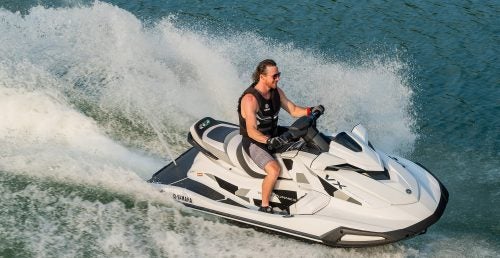
















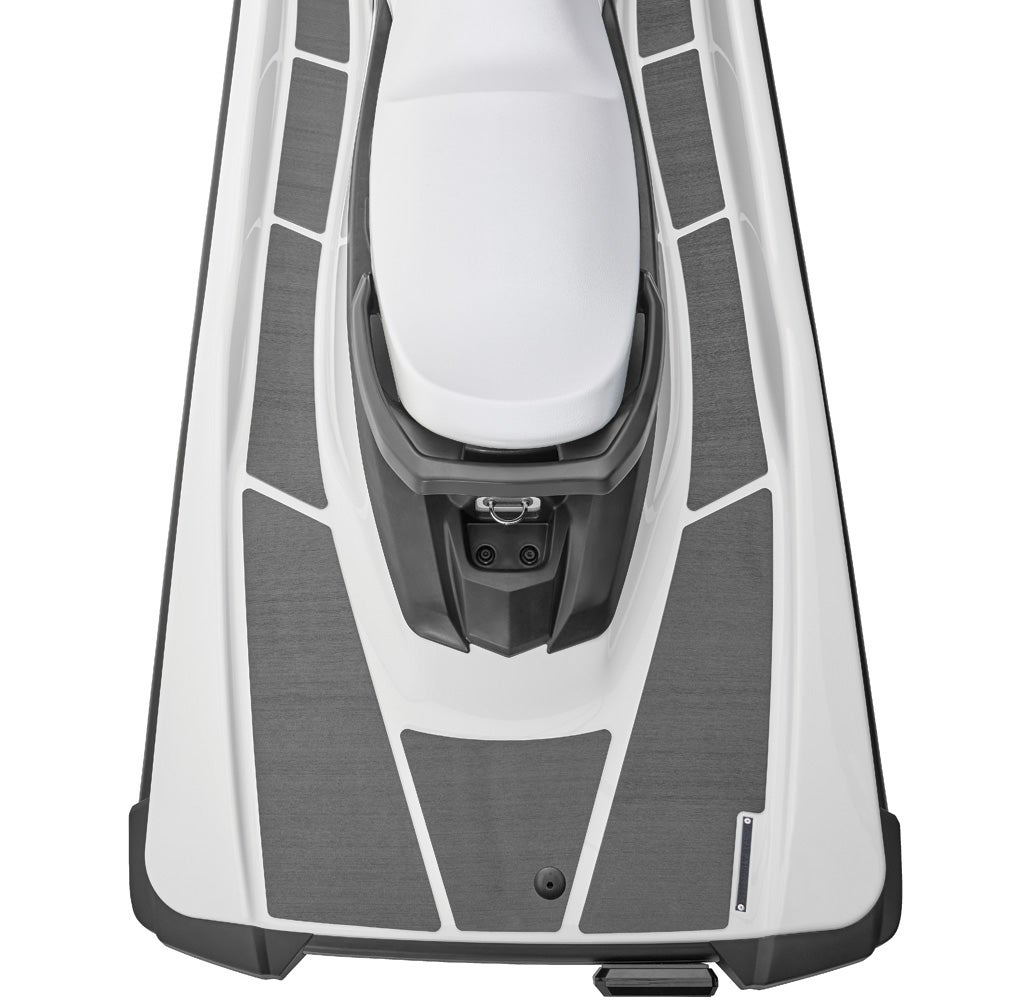
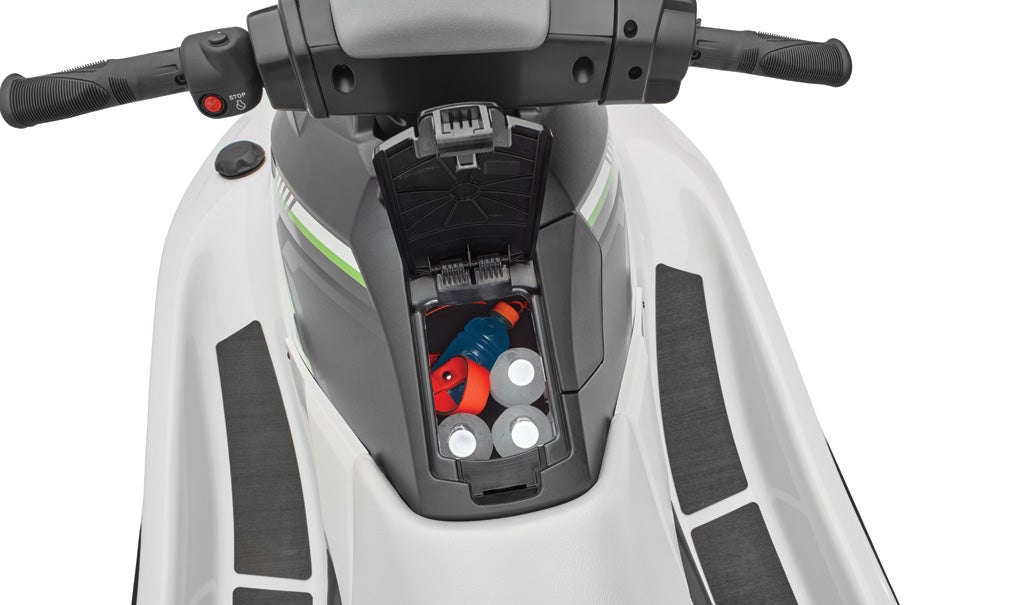
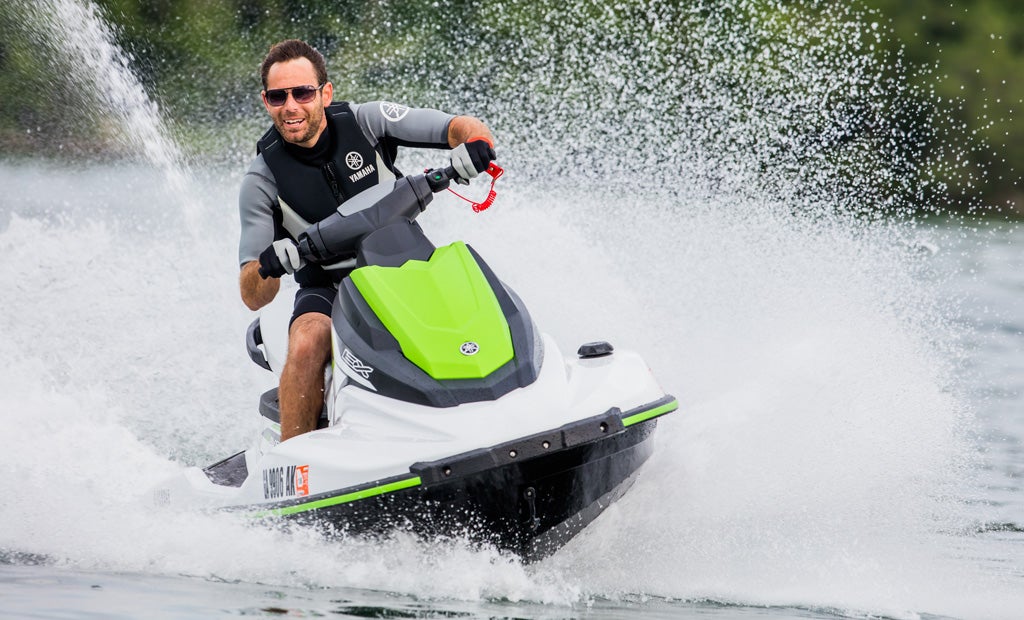
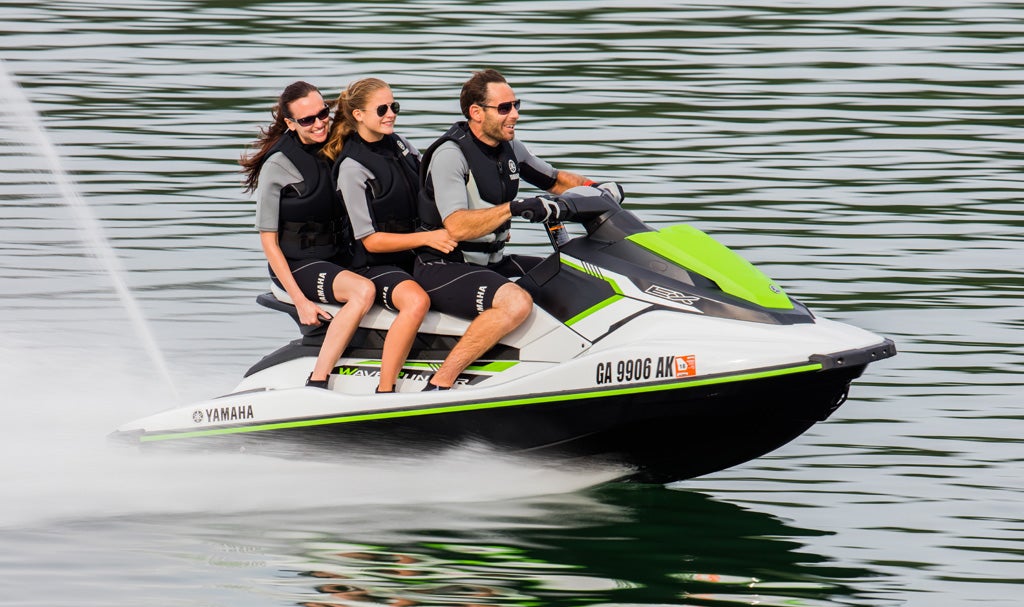

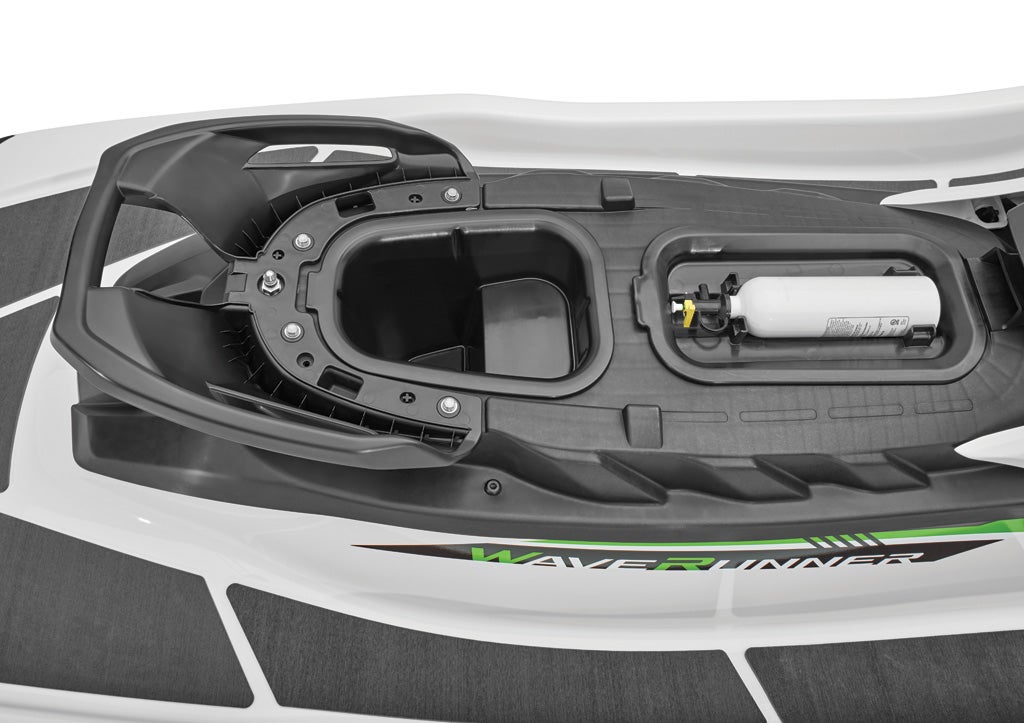
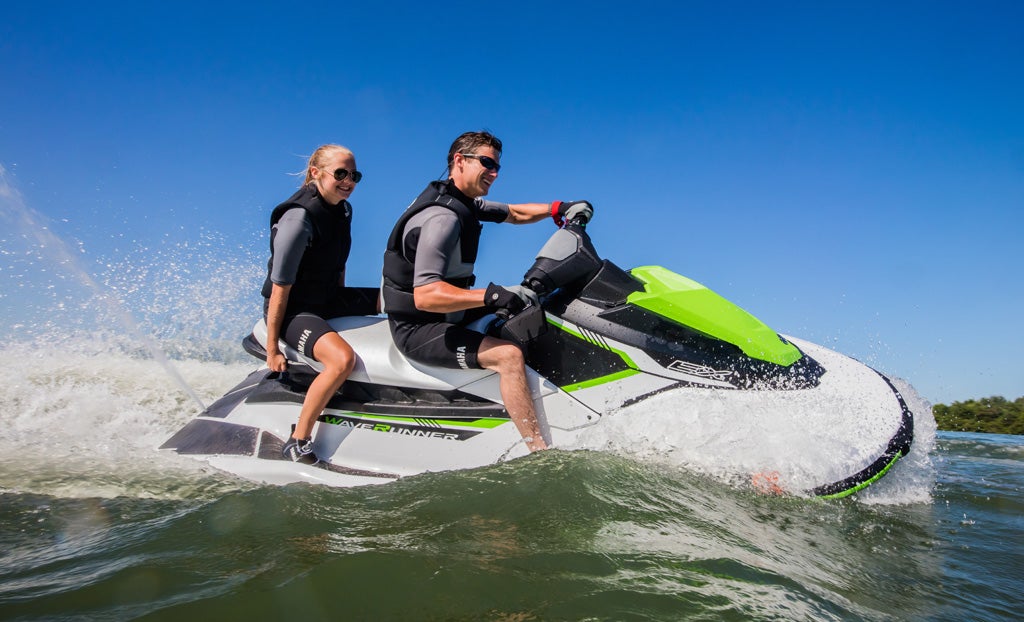









 Your Privacy Choices
Your Privacy Choices